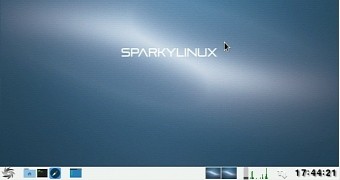The second development image of the SparkyLinux for ARMhf operating system has been released today for Raspberry Pi single-board computers.
The Sparky 4-dev20171127 ARMhf image is now available for testing on supported Raspberry Pi computers, and it comes with several optimizations and changes. First and foremost, this update replaces several apps that consumed a lot of system memory with lighter variants that are more friendly with the 1GB RAM of the SBC.
Second of all, the SparkyLinux 4-dev20171127 ARMhf image introduces a new raspi-config menu entry, which makes it easier for users to access the operating system's configuration options, and improves configuration of both wired (Ethernet) and wireless (Wi-Fi) networks through the NetworkManager Applet.
Here's how to test SparkyLinux on Raspberry Pi
If you want to install SparkyLinux on your Raspberry Pi computer, you should know that SparkyLinux for ARMhf is available in two flavors as .img images. The first one is called Lite edition and offers users only a text-based interface, but it's great if you want to configure the system from the ground up as you like it.
The second edition provides users with a graphical interface powered by the lightweight Openbox window manager, and it even comes with a few apps pre-installed by default. This is the recommended version for newcomers. Both editions include pre-configured SparkyLinux software repositories.
Once you've downloaded the image of your choice, you need to write it to an SD card using the instructions provided on the official wiki. After that, you can insert the SD card on your Raspberry Pi and boot SparkLinux. The default username and password combination is pi/sparky, and the root password is toor.
It's important to mention here that sudo is enabled by default and the en_US locale and keyboard layout are also enabled by default. However, please try to keep in mind that the operating system is still in development and it's not recommended for use for any production work. A stable release should be available in the coming months.

 14 DAY TRIAL //
14 DAY TRIAL //